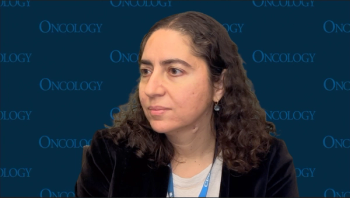
Higher Reliance on Surrogate End Points, Industry Funding Is Revealed for Modern RCTs
Based on results of a cohort study that examined randomized clinical trials in 3 times periods, it is evident that efficacy measures and funding sources have dramatically changed over time.
A cohort study revealed that contemporary randomized clinical trials (RCTs) show greater reliance on putative surrogate end points when compared against data from earlier RCTs, according to results published in JAMA Oncology.
Additionally, studies funded by pharmaceutical companies represent a larger share of RCTs conducted in the modern era versus those in previous decades.
“Over the past 5 decades, we have seen a major shift in primary end points and funding of RCTs,” wrote the study investigators who were led by Joseph C. Del Paggio, MD. “The oncology community needs to consider how we can answer fundamental questions in our field that will be of low priority for the pharmaceutical industry.”
In total, 298 RCTs conducted from 2010 through 2020 were examined, with this era being considered the “precision oncology” timeframe. These data were compared with trials conducted from 1995 through 2004 (cytotoxic therapy era) and 2005 through 2009 (targeted therapy era). Trials conducted included 44% in breast cancer, 37% in non–small cell lung cancer, and 19% in colorectal cancer. Primary treatments examined were molecule inhibitors (57%), cytotoxics (28%), hormone therapies (51%), and immune therapies (8%). Palliative intent was the aim of 69% of trials.
The most common primary end point in the contemporary era was progression-free survival (PFS), which has increased from 0% to 18% to 42% over the 3 study periods assessed (P <.001). Of the trials in the modern period, 58% met the primary end point.
Funding for clinical trials by the pharmaceutical industry has seen a dramatic increase. Only 57% of trials in the earliest period received pharmaceutical funding versus 78% in the middle period and 87% in the modern era (P <.001). Of note, 96% of trials for targeted agents were funded by industry versus 74% of those testing experimental cytotoxic therapies; additionally, industry funding was more likely to study palliative therapies versus non-industry studies. It also was noted that palliative trials with a PFS end point are more likely to be positive.
Some interesting findings related to the results included that only 60% of trials were conducted in a biomarker-enriched population, despite the fact that most were examining targeted therapies as the experimental regimen. Also, despite some increased effect size in the hazard ratio used in RCT power calculations and study results, median improvements in overall survival and PFS were noted as only 3.4 months and 2.9 months, respectively.
“To demonstrate that new cancer treatments are high value, the oncology community needs to consider the extent to which study end points and target effect size provide meaningful benefit to patients,” the study authors wrote.
A notable concern of the study authors was the greater reliance on medical writers for RCTs, which increased from 11% in 2020 to 66% in 2021. This is contrary to scientific principles stating that the first author on a study should take responsibility for writing the manuscript. They were also worried that medical writers might be influencing the trial interpretation.
“We are concerned with the widespread adoption of medical writers in high-profile oncology RCTs and believe this practice should be questioned,” wrote the authors. “Journal editors will need to consider if this practice is consistent with International Committee of Medical Journal Editors policies for authorship.”
Limitations of the study include the fact that RCTs in only 3 cancer types across 7 high-profile journals were examined, which may limit the generalizability of the findings. Additionally, only a small portion of the trials examined immunotherapy agents, since these RCTs were primarily performed in other tumor types, such as melanoma.
References
Del Paggio JC, Berry JS, Hopman WM, et al. Evolution of the randomized clinical trial in the era of precision oncology. JAMA Oncol. Published online March 25, 2021. doi: 10.1001/jamaoncol.2021.0379
Newsletter
Stay up to date on recent advances in the multidisciplinary approach to cancer.




















































































